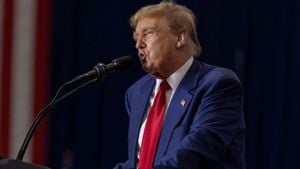Israel and Hezbollah have reached a significant ceasefire agreement, marking the potential end of over 14 months of conflict exacerbated by the earlier war involving Hamas. Prime Minister Benjamin Netanyahu announced the agreement after convening his security cabinet, which passed the ceasefire proposal with overwhelming support. The decision, which aims to halt hostilities currently intensifying along the Israel-Lebanon border, is expected to take effect at 4 AM local time on November 27, 2024. This development has garnered attention from global leaders, including U.S. President Joe Biden and French President Emmanuel Macron, who have been instrumental in facilitating negotiations.
While the ceasefire deal is poised to bring relief to affected regions, it also carries stipulations, including the withdrawal of Israeli troops from southern Lebanon within 60 days, allowing the Lebanese army to reclaim control over disputed territories traditionally held by Hezbollah. Alongside these military shifts, the agreement emphasizes international oversight for its enforcement, with the United States playing a leading role and France participating as requested by Lebanon. This coordinated effort is seen as imperative for restoring stability not only within Lebanon but also across the broader region.
Despite the hopeful news, many observers remain skeptical. The backdrop of mistrust between the two parties, rooted deeply in their long-standing animosities and historical conflicts, raises questions about the durability of this proposed peace. Netanyahu has cautioned, for example, about the consequences should Hezbollah violate the ceasefire, asserting Israel's readiness to respond decisively. Such warnings indicate the fragile nature of the current situation, where both sides could quickly revert to hostilities if provoked.
Compounding the complexity of the ceasefire negotiations are the existing tensions linked to the Gaza conflict, which continues to rage even as the Lebanon front may see calmer waters. The war against Hamas has fueled violence, introducing layers of conflict where the interests of various militant and political actors clash significantly. Reports indicate Hezbollah's continuous rocket fire toward northern Israel even as diplomatic talks surge, illustrating the precarious balance of power at play.
Internationally, the ceasefire announcement has been met with cautious optimism. The European Union's top diplomat, Josep Borrell, responded positively to Netanyahu’s move, underscoring the importance of diplomatic engagement amid fears of greater instability if the deal falters. Borrell urged Israel to embrace the agreement fully, insisting there are no viable excuses left to reject the ceasefire, as major security concerns have reportedly been addressed within the U.S.-French framework. He stressed the urgent need for action to prevent Lebanon from spiraling out of control amid the conflict.
Ground realities, though, showcase a starkly different picture. Lebanon finds itself grappling with severe humanitarian crises, with over one million displaced and significant civilian casualties reported from both sides due to the intense fighting. On the Lebanese side, statistics reveal upwards of 3,750 deaths, most attributed to Israeli airstrikes, raising alarm over the disastrous human cost of the prolonged confrontations. These statistics portray not just numbers but the grievances fueling both internal discontent and broader regional instability.
Within Israel, public sentiment appears divided. Citizens displaced from northern territories ponder their future as they await potential homecomings tethered to the ceasefire’s success. They share cautious optimism about returning to normalcy after months of evacuations amid fears of renewed rocket fire and military escalations. Simultaneously, the population also harbors anxiety about long-term security, particularly concerning Hezbollah's continued military capabilities bolstered by Iranian support.
Among the challenges to establishing lasting peace are the broader regional dynamics and the international community's role. Goals of restoring infrastructure and aid distribution, primarily devastated during the conflict, will be stymied by the lack of immediate access due to security concerns. The reconstruction of Lebanon, for example, will require substantial financial resources, raising questions about who will bear the cost and how the funds will be managed, especially with local governance issues still unresolved.
Key Israeli officials have emphasized the necessity for UN involvement not just for oversight but as part of mechanisms to prevent Hezbollah from re-establishing its militant foothold post-ceasefire. While the Lebanese government has expressed its willingness to deploy approximately 5,000 troops along the affected borders, mixed signals around enforcement and compliance continue to complicate the ceasefire proposition.
With the clock ticking and the ceasefire officially set for implementation, the eyes of the international community remain glued to this tumultuous region. The potential for either peace or a return to aggression looms large—hinging on the actions of both the Israeli forces and the Lebanese factions. The specter of renewed conflict remains palpable, as military readiness on both sides suggests the war is far from over, even with this temporary pause.
Looking forward, discussions spearheaded by U.S. Middle East envoy Brett McGurk indicate diplomatic efforts will expand beyond just the Lebanon deal, with aspirations to address the situation in Gaza as well. Palestinian sentiment and the need for humanitarian relief during this tumultuous period cannot be overlooked, as they too strive for stability amid the chaos.
What remains clear is the complexity of the conflict, intertwined with local grievances and international pressures, demanding continued diplomatic engagement. The upcoming weeks will be pivotal; as the ceasefire takes effect—or is jeopardized—the fates of thousands hinge on the decision-making of key players involved. The hope of reducing violence hangs delicately on the threads of this newly proposed peace, as regional experts watch closely to see how each faction navigates this transformative juncture.



